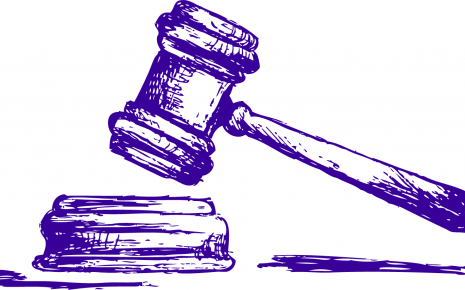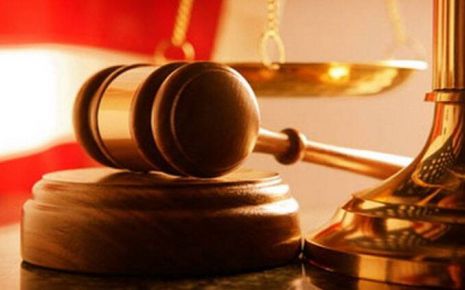Understanding Circumstantial Evidence: Meaning, Examples, and Importance
Circumstantial evidence is indirect proof that relies on inference to establish
a fact. Unlike direct evidence that directly proves an assertion, circumstantial
evidence involves a collection of facts and circumstances from which one can
infer the existence or likelihood of another fact. It includes various elements
such as the presence at the scene, motives, opportunities, behavior patterns,
and alibis.
Each type of circumstantial evidence standing alone will fail to establish guilt, but when they are all put together then it is possible to reasonably conclude that a certain outcome could be determined with confidence. Courts usually judge the weight of circumstantial evidence because it can be powerful but only if there is an unswerving confirmation that proves fault beyond any doubt.
Imagine person A is on trial for killing person B. The prosecution brings in a witness, C. Witness C testifies: he saw A kill B. Or, he might express something different. He might say he saw A fleeing from where B's dead body lay, clutching a knife dripping with blood. The information shared by C in the first situation is what we typically think of as direct evidence. The second piece of information he shared? That's called circumstantial evidence.
There are numerous instances where reliance on the circumstantial evidence is inevitable in a criminal law. This is true due to the fact that usually, in no single instance does one get direct information about the presence of wrongdoing. The offence is taken to have been established only by a proof of circumstance.
Circumstantial evidence must be "clinching" and shall in no way indicate even the suspicion that the accused is not an offender. Circumstantial evidence should prove beyond all reasonable doubt that it was the accused who must have committed the act.
Such instances include cases where the rule of 'last seen with the deceased' applies and there should be proof that the accused was last seen with the deceased as well as some additional evidence showing that only the accused might have perpetrated the offence.
However, in cases of the accused having gone along with the deceased to the well, the prosecution needs to prove further that there were some fights between the parties and that a tumble in the well was heard or someone had heard the victim cry for help.
When a person is on trial for the crime of poisoning, it's crucial to have certain evidence. First, proof that the suspect bought the poison from a specific store is needed. Next, finding the receipt for the poison purchase is important. Lastly, locating leftovers of the same poison the accused bought is vital. This trio of evidence can solidly confirm that the person on trial is the only one guilty of the crime.
Court Judgments:
Conclusion:
In the legal system, the value of circumstantial evidence cannot be overstated. Unlike direct evidence, which provides clear and concrete proof, circumstantial evidence relies on interwoven details and subtle factors to suggest the probability or existence of a certain fact.
While each individual piece of circumstantial evidence may not be enough to secure a conviction, the sum of its parts can create a persuasive account of a situation that gives insight into a case as a whole. By evaluating the totality of the evidence, judges and juries can determine how much weight to give to this form of proof, recognizing that it can be exceedingly powerful in establishing guilt if all elements can weave together to leave no room for reasonable doubt.
References:
Each type of circumstantial evidence standing alone will fail to establish guilt, but when they are all put together then it is possible to reasonably conclude that a certain outcome could be determined with confidence. Courts usually judge the weight of circumstantial evidence because it can be powerful but only if there is an unswerving confirmation that proves fault beyond any doubt.
Imagine person A is on trial for killing person B. The prosecution brings in a witness, C. Witness C testifies: he saw A kill B. Or, he might express something different. He might say he saw A fleeing from where B's dead body lay, clutching a knife dripping with blood. The information shared by C in the first situation is what we typically think of as direct evidence. The second piece of information he shared? That's called circumstantial evidence.
There are numerous instances where reliance on the circumstantial evidence is inevitable in a criminal law. This is true due to the fact that usually, in no single instance does one get direct information about the presence of wrongdoing. The offence is taken to have been established only by a proof of circumstance.
Circumstantial evidence must be "clinching" and shall in no way indicate even the suspicion that the accused is not an offender. Circumstantial evidence should prove beyond all reasonable doubt that it was the accused who must have committed the act.
Such instances include cases where the rule of 'last seen with the deceased' applies and there should be proof that the accused was last seen with the deceased as well as some additional evidence showing that only the accused might have perpetrated the offence.
However, in cases of the accused having gone along with the deceased to the well, the prosecution needs to prove further that there were some fights between the parties and that a tumble in the well was heard or someone had heard the victim cry for help.
When a person is on trial for the crime of poisoning, it's crucial to have certain evidence. First, proof that the suspect bought the poison from a specific store is needed. Next, finding the receipt for the poison purchase is important. Lastly, locating leftovers of the same poison the accused bought is vital. This trio of evidence can solidly confirm that the person on trial is the only one guilty of the crime.
Examples of Circumstantial Evidence
The following examples may illustrate circumstantial evidence:- Finding a person's belongings or evidence of their presence at the scene of a crime, even if they were not directly witnessed committing the act.
- Demonstrating that a person had a motive to commit a crime, such as financial gain, revenge, or jealousy, even if there is no direct evidence linking them to the act.
- If it is conceivable to tie a particular individual with a location, time, or capability in relation to the scene of the offense.
- If behavioral changes are noticeable in a person (nervousness, etc.) at the time of the presumed crime which corresponds to it.
- The presence of someone's fingerprints or DNA at a crime scene suggests that he/she was there but only indicates his/her possible participation and not the actual crime committed.
- Giving a false alibi which is shown not to be true at a later time.
- Financial irregularities transacted during the same period as the crime hinting involvement.
- The accused person becomes incriminated when statements made by witnesses who did not witness the crime directly correspond with other evidence. Essentially, the accused person appears culpable when the words spoken by these individuals align with other forms of proof.
- Inculpatory admissions are a type of confession in which the accused either verbally or in writing gives statements that suggest a sense of culpability or awareness of the offense committed even when a direct admission is not made.
- Avoidance of arrest, fleeing the jurisdiction, changing one's identity or performing any other action that demonstrates intent regarding possible guilt.
- Hearsay evidence based on anonymous tips or such information which indirectly leads to the involvement of accuser.
- The establishment of a trend of action on the part of the culprit corresponding to the perpetration of crime.
- Location or telephone records of where the accused person was located or communicated with the victim.
- Violent behavior committed by the accused in the past, pointing towards the predisposition to commit the crime.
- Any available video footage proving that the accused was near to the crime scene.
- Differences in statements of the accused at various times or disparity between statements of the accused and all of the witnesses.
- Statements posted online that could reveal the state of mind of the supposed offender or his involvement in crime.
- GPS data or surveillance footage tracking the movement of the accused person's vehicle around the time of the crime.
- Work schedules or attendance records that place the accused at or near the crime scene.
- Discovering incriminating search queries or internet history on the accused's devices.
- Scientific evidence, such as bloodstains or DNA, linking the accused to the crime scene.
- Testimony from witnesses who did not directly observe the crime but can attest to the accused person's actions before or after.
- Access card records indicating the accused person's presence in certain areas at specific times.
Court Judgments:
- It is only when all the circumstances clearly exclude innocence of the
accused, he can be convicted. Otherwise, the accused is entitled to be
acquitted. AIR 2009 SC 2279
- There is a difference between appreciation of circumstantial evidence in
civil and criminal case. Preference and probabilities should guide the
application of the circumstantial evidence to the issue under consideration
in civil court, but in matters coming under criminal cases each of the
circumstances must be proved beyond doubt in continuous connectivity to
exclude the possibility of innocence if the circumstances lead to proof of
the offence. AIR 1966 SC 1734
- In criminal law circumstantial evidence can be produced and the same can
be relied upon. However, circumstantial evidence to prove the circumstance
is not allowed unless such circumstances are intrinsically related as cause
and effect. 2004 Cri LJ 2180.
- The principles governing the circumstantial evidence as led by Supreme
Court are as follows:
- The circumstances from which the conclusion of guilt is to be drawn should be fully established.
- The circumstances concerned 'must' or 'should' and 'not may be' established.
- The facts so established should be consistent only with the hypothesis of the accused i.e., to say, they should not be explainable on any other hypothesis except that the accused is guilty.
- The circumstances should be of a conclusive nature and tendency.
- They should exclude every possible hypothesis except one to be proved.
- There must be a chain of evidence so complete as not to leave any reasonable ground for a conclusion consistent with the innocence of the accused and must show that in all human probabilities the act must have been done by the accused." AIR 1984 SC 1622.
- A Bench of Supreme Court comprising of Justices BR Gavai and Sanjay Karol
observed in March 2023 that in case of circumstantial evidence when two views
are possible, view favoring the accused person's innocence should be adopted.
- In the case of Mahendra Bhaskar Pavre v. State of Maharashtra, the Bombay High
Court on 13 October 2016 observed that an inference of guilt of father cannot be
reached on mere fact that daughters were last seen with their fathers.
- In the case of Mahesh Kumar and Ors. v. State of Rajasthan, the Supreme
Court on 16 July 2019 observed that there must be a complete chain of
evidence as not to leave any reasonable ground for a conclusion consistent
with innocence of accused.
- While the case can be based on circumstantial evidence, it has to pass
five tests prescribed in Hanamat's v. State of M.P [1953] SCR 1091, as noted below:
- All the necessary facts, leading to the conclusion of a guilty person, must be proved by evidence and confirmed.
- These facts, when thus established, must be reconcilable with the hypothesis of guilt of the accused. All others must be discarded or explained away as inconsequential aberrations that find no relevance anywhere else save the hypothesis of guilt of the accused.
- The evidence in question must point clearly towards some definite and natural facts.
- Every other assumption, save that particular one proposed for proof, must be excluded.
- The chain of evidence must be complete, which should leave no reason at all that the accused is innocent. It has to point out that the deed was almost certainly performed by the accused. These five golden principles constitute the panch-sheel of the proof of a case based on circumstantial evidence and in the absence of a corpus delicti.
- In the case of Sharad Birdhichand Sarda v. State of Maharashtra (1984), the court observed that when situations are fully proved and only indicate the guilt of the defendant, then the circumstantial evidence alone can justify a verdict of guilty.
- In a case of circumstantial evidence, the chain of evidence has to be complete in all respects and also exclude any other theory, the Supreme Court emphasized in June 2023 while acquitting a man in a 22-year-old murder case.
Laxman Prasad @ Laxman v. State of Madhya Pradesh
- In order to convict on circumstantial evidence alone, the facts and circumstances must be so closely interwoven and connected that the finger of guilt is pointed unerringly at the defendant and the defendant alone.
State v. Crawford
- A Supreme Court Bench of Chief Justice UU Lalit, Justices S Ravindra Bhat, and Sudhanshu Dhulia observed in October 2022 that in the case of circumstantial evidence, heavy duty is cast upon the prosecution to prove the case beyond reasonable doubt.
- A Bench of Supreme Court consisting of Justices UU Lalit, S Ravindra Bhat, and PS Narasimha in March 2022 held in the case of Nandu Singh v. State of Madhya Pradesh that the complete absence of motive in a case based on circumstantial evidence weighs in favor of the accused.
Conclusion:
In the legal system, the value of circumstantial evidence cannot be overstated. Unlike direct evidence, which provides clear and concrete proof, circumstantial evidence relies on interwoven details and subtle factors to suggest the probability or existence of a certain fact.
While each individual piece of circumstantial evidence may not be enough to secure a conviction, the sum of its parts can create a persuasive account of a situation that gives insight into a case as a whole. By evaluating the totality of the evidence, judges and juries can determine how much weight to give to this form of proof, recognizing that it can be exceedingly powerful in establishing guilt if all elements can weave together to leave no room for reasonable doubt.
References:
- Supreme Court Judgment on Circumstantial Evidence - Two Views Possible: Innocence of Accused or Preponderance of Probability - https://www.livelaw.in/top-stories/supreme-cour-judgment-on-circumstantial-evidence-two-views-possible-innocence-of-accused-preponderance-of-probability-224764
- Manupatra - Roundup - https://updates.manupatra.com/roundup/contentsummary.aspx?iid=6523
- Manupatra - Roundup - https://updates.manupatra.com/roundup/contentsummary.aspx?iid=22611
- Harjinder Singh - Circumstantial Evidence - https://www.harjindersingh.in/harjinder-singh/circumstantial-evidence
- Indian Circumstantial Evidence History - https://www.lawyersclubindia.com/articles/indian-circumstantial-evidence-history-15502.asp
- Circumstantial Evidence Chain - Complete Guilt: Supreme Court - https://www.barandbench.com/news/litigation/circumstantial-evidence-chain-complete-guilt-supreme-court
- Supreme Court - Circumstantial Evidence Confessional Statement Videography - https://www.livelaw.in/top-stories/supreme-court-circumstantial-evidence-confessional-statement-videography-statements-211107
- Law of Evidence, Vepa P. Sarathi, Eastern Book Company, Lucknow
- Evaluation of Evidence, N. K. Acharya, Asia Law House, Hyderabad
- State v. Ball - https://casetext.com/case/state-v-ball-66
- CaseMine Judgment - https://www.casemine.com/judgement/in/63dcec90f683ed3798284346
- SCC Snippets: Five Golden Principles Governing Cases Based Only on Circumstantial Evidence - https://www.scconline.com/blog/post/2021/10/20/scc-snippets-five-golden-principles-governing-cases-based-only-on-circumstantial-evidence//
- Strong Suspicion Can't Be Seen as Proof Beyond Reasonable Doubt: SC Sets Aside - https://lawbeat.in/supreme-court-judgments/strong-suspicion-cant-be-seen-proof-beyond-reasonable-doubt-sc-sets-aside
Law Article in India
Legal Question & Answers
Lawyers in India - Search By City
LawArticles
How To File For Mutual Divorce In Delhi

How To File For Mutual Divorce In Delhi Mutual Consent Divorce is the Simplest Way to Obtain a D...
Increased Age For Girls Marriage

It is hoped that the Prohibition of Child Marriage (Amendment) Bill, 2021, which intends to inc...
Facade of Social Media

One may very easily get absorbed in the lives of others as one scrolls through a Facebook news ...
Section 482 CrPc - Quashing Of FIR: Guid...

The Inherent power under Section 482 in The Code Of Criminal Procedure, 1973 (37th Chapter of t...
The Uniform Civil Code (UCC) in India: A...

The Uniform Civil Code (UCC) is a concept that proposes the unification of personal laws across...
Role Of Artificial Intelligence In Legal...

Artificial intelligence (AI) is revolutionizing various sectors of the economy, and the legal i...








Please Drop Your Comments